Panasonic Lumix DMC-FZ50
-
-
Written by Gordon Laing
Panasonic Lumix DMC FZ50 real-life noise (standard, low and high NR)
Panasonic Lumix DMC-FZ50 results continued…
Outdoor / Resolution / Noise / Noise 2 / Corner sharpness / Fringe & macro / Geometry / Vignetting
| Support this site by shopping via these links |
| Support this site by shopping via these links | |||||||||||||||
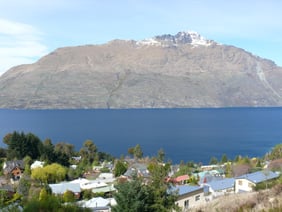 | To compare noise levels under real-life conditions we shot this scene using the Panasonic Lumix FZ50 at each ISO setting. The test was repeated for each of the FZ50’s Noise Reduction options. The zoom was adjusted so the vertical field matched previous results for comparative purposes; these tests were also performed moments after our Lumix LX2 shots so can be compared with this review if desired. Due to the high brightness of the scene and requirement to shoot it at up to 3200 ISO, it was necessary to use a neutral density filter and an aperture of f7.1. |
|
The image above was taken with the Panasonic Lumix DMC-FZ50 at 8mm f7.1 and at 100 ISO; the original measured 4.68MB. The final crop at the bottom of the page is taken from an image using the High Sensitivity preset. This uses an ISO of 3200, but sets the exposure and noise reduction automatically, hence the single crop and different aperture. The crops are taken from an area just below and to the left of the centre. Like the Lumix LX2, noise and noise reduction are the biggest problems facing the FZ50. At 100 ISO with Standard Noise Reduction, the results may be fine, but increase the sensitivity any further and the FZ50 quickly runs into trouble. There’s little evidence of actual noise speckles, but a worrying degree of lost detail and posterised colours through impressionistic noise reduction. Just check out the foliage throughout the ISO range and you’ll see what we mean. At 200 ISO it’s already getting pretty bad, but from 400 ISO upwards the effect can look awful; the less said about the High Noise Reduction samples, the better. Of course to be fair we’re closely examining crops on-screen at 100%, which in reality represents a massive enlargement. Print the FZ50’s images at typical sizes and these artefacts essentially become invisible. But as we said in our LX2 review, treating a camera as if it had half its actual resolution surely defeats the object of a 10 Megapixel camera. When you buy this kind of product, it’s not unreasonable to expect all of its pixels to be usable. You should be able to make large prints, or zoom-into 100% on-screen and not grimace. While the FZ50’s noise and noise reduction aren’t as bad as the LX2, we’re still dissatisfied with the results. Steadily increasing resolutions for marketing purposes at the cost of image quality simply has to stop. |
Panasonic Lumix DMC-FZ50 (standard NR) |
Lumix DMC-FZ50 (low NR) |
Lumix DMC-FZ50 (high NR) | ||
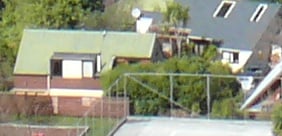 |
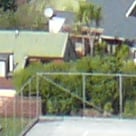 |
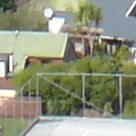 | ||
100 ISO, 1/50, f7.1 |
100 ISO, 1/50, f7.1 |
100 ISO, 1/50, f7.1 | ||
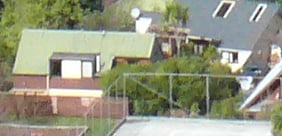 |
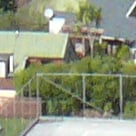 |
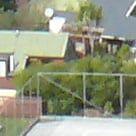 | ||
200 ISO, 1/100, f7.1 |
200 ISO, 1/100, f7.1 |
200 ISO, 1/100, f7.1 | ||
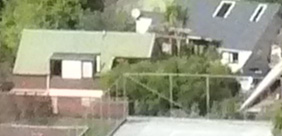 |
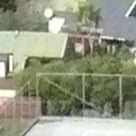 |
 | ||
400 ISO, 1/200, f7.1 |
400 ISO, 1/200, f7.1 |
400 ISO, 1/200, f7.1 | ||
 |
 |
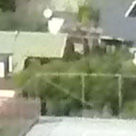 | ||
800 ISO, 1/400, f7.1 |
800 ISO, 1/400, f7.1 |
800 ISO, 1/400, f7.1 | ||
 |
 |
 | ||
1600 ISO, 1/800, f7.1 |
1600 ISO, 1/800, f7.1 |
1600 ISO, 1/800, f7.1 | ||
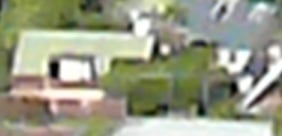 |
 |
 | ||
3200 ISO, 1/800, f10 (High Sensitivity preset) |
3200 ISO unavailable outside HS mode |
3200 ISO unavailable outside HS mode | ||
| ||||||||||||
Panasonic Lumix DMC FZ50 JPEG versus RAW | ||
 | 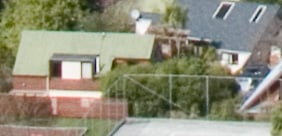 | |
10M Fine JPEG, 100 ISO, 1/50, f7.1 |
RAW conversion, 100 ISO, 1/50, f7.1 | |
Using the Adobe Camera RAW defaults, the processed RAW file from the FZ50 is much less sharp than the in-camera JPEG and slightly less saturated. It does however reveal subtle tonal detail which had been washed-out or smoothed-over on the JPEG. By tweaking the sharpness and saturation in either ACR or Photoshop, it’s possible to produce a slightly superior result from the FZ50’s RAW files, although the difference isn’t as great as other RAW versus JPEG comparisons we’ve performed. Of course, further tweaking or alternative RAW software may yield more significant results.




